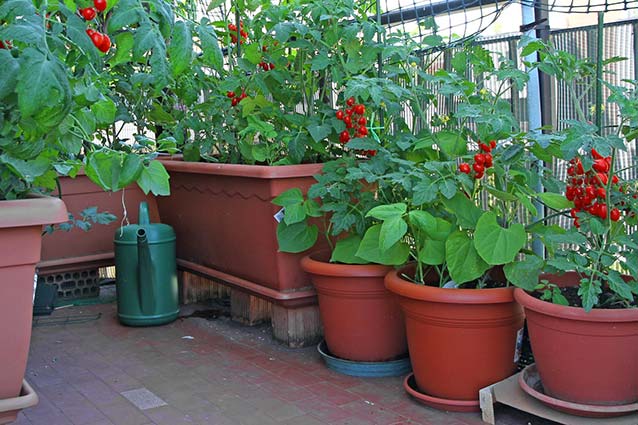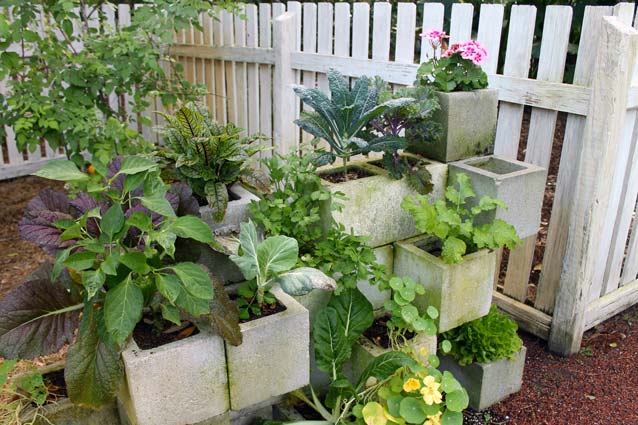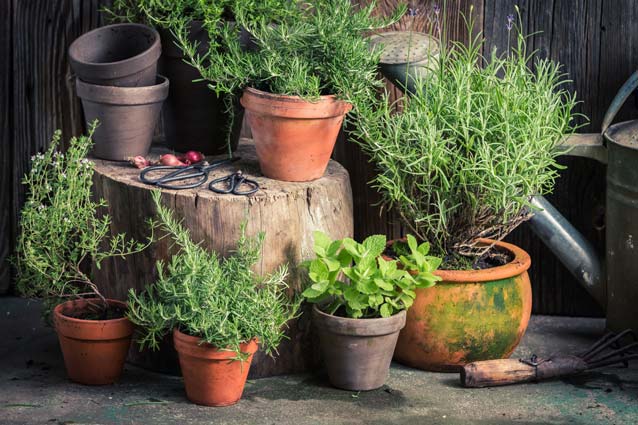How it Works: Preen Garden Weed Preventers
Here's how our Garden Weed Preventers prevent weeds before they even sprout rather than killing them after they’ve already had the chance to grow.
Most flower pots are used to grow flowers. However, that same plastic and terra-cotta pots – not to mention just about any other container with holes in the bottom – can be put to use growing vegetables and herbs. Edible plants grow just as well as flowers in garden containers. In many cases, edibles grow even better in pots than in the ground where plants have to deal with weeds, often-lousy soil, and animals invading the garden.
In exchange for those advantages, container gardens have two main needs. One is that they dry out quicker than in-ground gardens and so generally need daily watering. The other is that because of the frequent watering, potted edibles need more fertilizer than in-ground plants.

iStock / via Getty Images
To compensate for the extra water needs, use big pots. The bigger the pot, the more potting mix it can hold and the slower it’ll dry out. Plastic, foam, metal, and heavy concrete pots lose less moisture than more porous terra-cotta, clay, and ceramic pots. Whatever pot you use, make sure the bottoms have adequate drainage holes. One of the fastest ways to kill a plant in a pot is to allow the roots to stand in soggy soil.
Use high-quality, light-weight, potting mix in your containers - not cheap, dense soil brands, or worse yet, clay soil from the garden. It’s also a good idea to add an absorbing gel like Roots Terra-Sorb Super Absorbent Planting Gel as this significantly increases the water-holding capacity of the soil. It can absorb up to 150X its weight in water, then slowly releases this water to the soil and plant roots. And, it’s able to absorb and release water repeatedly, before it eventually slowly biodegrades. While it’s ideal for use with containerized edibles, which require frequent watering – be sure to take into account the soil expansion when watering – and allow proper room within the pot.
Check your pots daily for water. When the potting mix feels dry to the touch and is noticeably lighter in weight, it’s time to water. Add enough water until it drains out the bottom. Most vegetables – especially fruiting ones – are heavy feeders, so figure on a regular supply of fertilizer. Long-acting, natural slow-release granular fertilizers such as Natural Start Tomato, Vegetable & Herb Food can be scratched into the soil every four to six weeks, while liquid fertilizers will require more frequent use.

George Weigel

iStock / Getty Images Plus
Container edible gardens are a good solution for people who don’t have space for in-ground gardens, renters, and those who would rather not dig up space in the lawn. Decks, patios, driveways, balconies, window boxes, and even flat rooftops are all candidates as container veggie-growing sites. All you need is a half-day or more of sunlight and access to water (or enough energy to carry watering cans).
Although most any crop will grow in pots, compact ones work best. Good choices include lettuce, spinach, most herbs, broccoli, onions, leeks, carrots, beets, and radishes. Peppers, eggplant, tomatoes, cucumbers, and other larger crops also grow well in pots, although it’s best to choose small-sized or “bush” varieties. Staking helps support larger plants in small spaces.